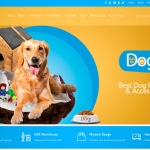
Unlocking Success: Mobile Marketing Strategies for E-commerce Apps. Hey there! If you're diving into the world of e-commerce, you probably know by now that mobile is where the magic happens. With everyone glued to their phones, mobile marketing is no longer just an option—it's a must. In this post, I’ll walk you through some effective strategies for mobile marketing that can help your e-commerce app stand out in the crowded digital marketplace. So, let’s get started!
What is Mobile Marketing?
First things first, let’s clarify what we mean by mobile marketing. Simply put, it’s all about reaching your customers through their mobile devices. This could be via apps, SMS, social media, or even mobile ads. With the rise of smartphones, mobile marketing has become a key player in driving sales and engaging customers.

Mobile Marketing for Ecommerce Apps
The Importance of Mobile Marketing for E-commerce
Why should we focus so much on mobile? Well, think about it—how often do you check your phone? Studies show that a whopping 79% of smartphone users have made a purchase using their device in the past six months! That’s a lot of potential customers right at your fingertips. So, if you want to tap into this market, a solid mobile marketing strategy is essential.
Understanding Mobile Consumer Behavior
To make the most of mobile marketing, we need to get inside the minds of mobile consumers. Most people now prefer shopping on their phones due to the convenience it offers. Whether it’s a quick late-night shopping spree or browsing during a commute, mobile shopping has become a daily routine for many.
But it’s not just about convenience. Users expect a smooth, fast, and engaging experience. If your app doesn’t deliver, chances are they’ll bounce and head over to your competitors.
Key Strategies for Mobile Marketing in E-commerce Apps
Now, let’s dive into some actionable strategies that can give your e-commerce app the boost it needs!
1. App Store Optimization (ASO)
Just like SEO for websites, ASO is crucial for making your app discoverable in app stores. Start by researching relevant keywords and incorporating them into your app title and description. Good visuals, like an eye-catching icon and engaging screenshots, can also make a huge difference. Think of it as dressing your app for a first date—it needs to look good!
2. Push Notifications and In-App Messaging
If used wisely, push notifications can be a game-changer. They allow you to communicate directly with your users, offering promotions, reminders, or personalized messages based on their behavior. However, there’s a fine line between helpful nudges and annoying spam. It’s all about finding that sweet spot—send relevant content at the right time to keep your customers engaged without overwhelming them.

Mobile Marketing for Ecommerce Apps
3. Mobile Advertising Channels
Social media is your best friend when it comes to mobile marketing. Platforms like Instagram, Facebook, and TikTok have become hotspots for ads, especially for e-commerce. Create eye-catching visuals or short videos that showcase your products and grab attention. Retargeting ads can also be effective, reminding users of items they browsed but didn’t buy.
4. SMS and Email Marketing
Don’t underestimate the power of good ol’ SMS and email marketing. Collect phone numbers and emails during the checkout process or through app registrations. Use these channels to send exclusive promotions, product updates, or abandoned cart reminders. Just remember to keep your messages concise and valuable!
5. Influencer and Affiliate Marketing
We all trust recommendations from people we admire, so teaming up with influencers can give your app a significant boost. Find influencers in your niche who resonate with your brand and collaborate on campaigns. Affiliate marketing can also drive sales by allowing affiliates to earn a commission for every sale they generate.
6. Gamification and Loyalty Programs
Who doesn’t love a little game? Integrating gamification elements can increase user engagement and make shopping more fun. You could create challenges, offer points for purchases, or run seasonal contests. Plus, loyalty programs reward repeat customers, encouraging them to keep coming back for more!
Enhancing User Experience on Mobile
Mobile UX Design Principles
Design is crucial when it comes to mobile apps. A clean and intuitive layout helps users navigate easily. Avoid clutter and make sure your app loads quickly—no one likes waiting!
Checkout and Payment Optimization
A smooth checkout experience is vital. Simplify the process by reducing the number of steps needed to complete a purchase. Offer multiple payment options, including mobile wallets, to cater to different preferences. Remember, the easier you make it for customers to buy, the more sales you’ll see.
Personalization through AI
Personalization is key in today’s market. Use AI tools to analyze user behavior and offer tailored recommendations. If someone frequently buys athletic gear, suggest similar items or complementary products. Personal touches can significantly enhance user satisfaction and drive sales.

Mobile Marketing for Ecommerce Apps
Measuring Mobile Marketing Success
Key Performance Indicators (KPIs)
To know if your efforts are paying off, keep an eye on your KPIs. Look at metrics like user acquisition, retention rates, and conversion rates. These numbers will help you understand what’s working and where you need to pivot.
Utilizing Data Analytics for Continuous Improvement
Use analytics tools to gain insights into user behavior. Regularly review this data to refine your strategies. The beauty of mobile marketing is that it allows you to test, learn, and adjust in real time!
Challenges in Mobile Marketing
Privacy Concerns and Data Protection
With great power comes great responsibility. As mobile marketing becomes more personalized, it’s essential to handle customer data with care. Stay informed about data protection regulations and be transparent about how you use customer information.
Emerging Technologies Shaping Mobile Marketing
Keep an eye on emerging tech trends, like augmented reality (AR) and voice search. These innovations can enhance user experiences and provide fresh marketing opportunities.
Conclusion: The Future of Mobile Marketing for E-commerce Apps
In today’s fast-paced world, mobile marketing is not just an add-on; it’s a necessity for e-commerce success. By understanding consumer behavior and implementing effective strategies, you can create a seamless shopping experience that keeps customers coming back.
So, are you ready to take your mobile marketing to the next level? Let’s make your e-commerce app the go-to destination for shoppers everywhere!
Breaking Barriers: Women Leaders Making Waves in the Business World












